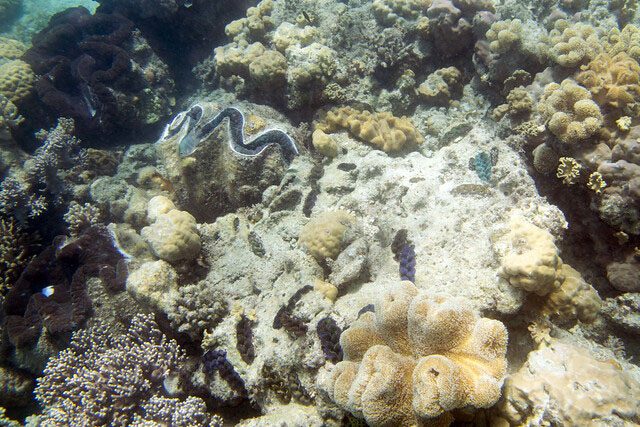The poaching of giant clams around Scarborough (Panatag) Shoal in the West Philippine Sea has grave effects on the marine environment and thus, to local livelihood.
A Twitter-based group that advocates for fishermen and the UP Marine Science Society shared posts that detailed why the mollusks should be protected instead of harvested and poached by Chinese fishermen.
RELATED: ‘China’s clam harvesting violates Philippines sovereignty’
Recently, Chinese fishermen were caught poaching giant clams from the West Philippine Sea. #ChinaLayas
All species of giant clams in the Philippines are listed under the CITES, thus their trade must be regulated. Here's a thread on why the giant clams must be protected: pic.twitter.com/4n8ZdgV7yW
— Mangingisda #ChinaLayas (@MangingisdaSays) April 19, 2019
Role in marine ecosystem
Giant clams are called “reef builders” because they produce “80 tonnes of carbonate shell material per hectare” each year.
These materials provide the housing for soft corals, sponges, sea squirts and large algae.
“They contribute to reef build-up by providing higher relief and structures in coral reefs,” the UP Marine Science Society noted.
Giant clams also provide a habitat for young fishes such as pearl fishes and anemone fishes against predators and serve as a refuge for numerous fish eggs deposited by adults.
Moreover, they help make the ocean clean since they are known filter feeders or organisms who obtain their food source by filtering organic matter or fine particulates like phytoplankton, zooplankton and detritus from the water.
“Giant clams potentially counteract eutrophication (nutrient enrichment that typically leads to algal overgrowth) via water filtering and nutrient sequestration. Therefore, they help maintain tolerable/ optimal water conditions for reef organisms,” the UP-based organization shared.
Giant clams are also a healthy source of nutrients for eels, snails, fishes and starfishes who rely on the mollusk for their dietary needs.
“Giant clam tissues and discharges are food for a wide array of marine organisms (e.g. mollusks, echinoderms, crustaceans, flatworms, and fishes). Hence, their loss means reduced food sources for organisms that depend on them,” the UP Marine Society added.
Threatened species
Giant clams are one of the threatened species listed in the Convention on International Trade in Endangered Species of Wild Fauna and Flora (CITES), specifically in Appendix II.
CITES is a global trade agreement among different governments that aim to ensure the trading of wild animals and plants do not threaten its survival.
The mollusk is also listed under the International Union for Conservation of Nature’s Red List as a “vulnerable” species since August 1996.
A “vulnerable” status means that the species has a “very high risk of extinction as a result of rapid population declines of 30 to more than 50 percent over the previous 10 years,” among others.
Giant clam poaching
Last week, reports of Chinese fishermen harvesting giant clams in Scarborough Shoal caught the attention of Malacañang after Filipino lawyers and fishermen urged the Supreme Court to intercede in China’s environmental depredation to Philippine waters.
Foreign Affairs Secretary Teodoro Locsin Jr. initially dismissed the issue on Twitter, saying that clams are “just f*cking food” and that there was no need to go to “war” over them.
However, his statement was denounced by many Filipinos, including “Asia’s Songbird” Regine Velasquez who stated that the act was a clear move of China’s blatant exploitation on Philippine resources.
Malacañang admitted that the giant clam poaching violates the country’s sovereignty but later on said that it will not do anything “drastic” about China’s provocations in the disputed maritime territories.










